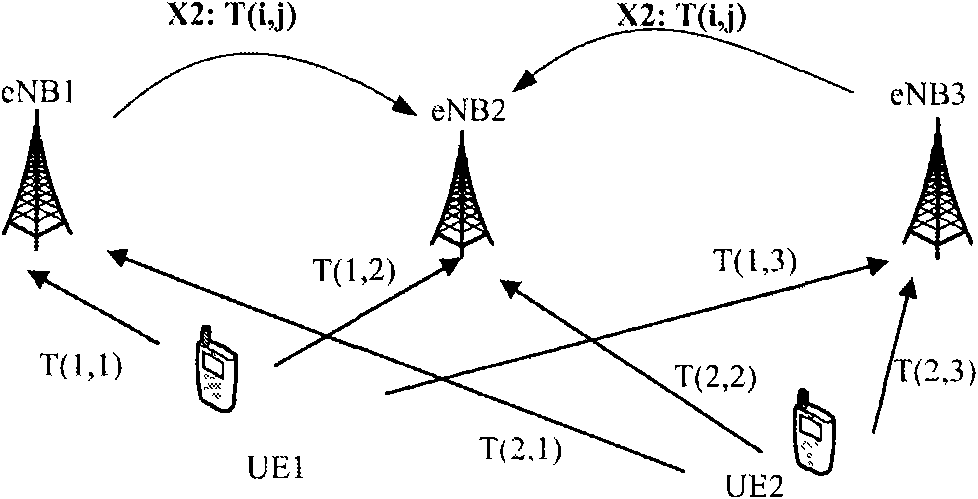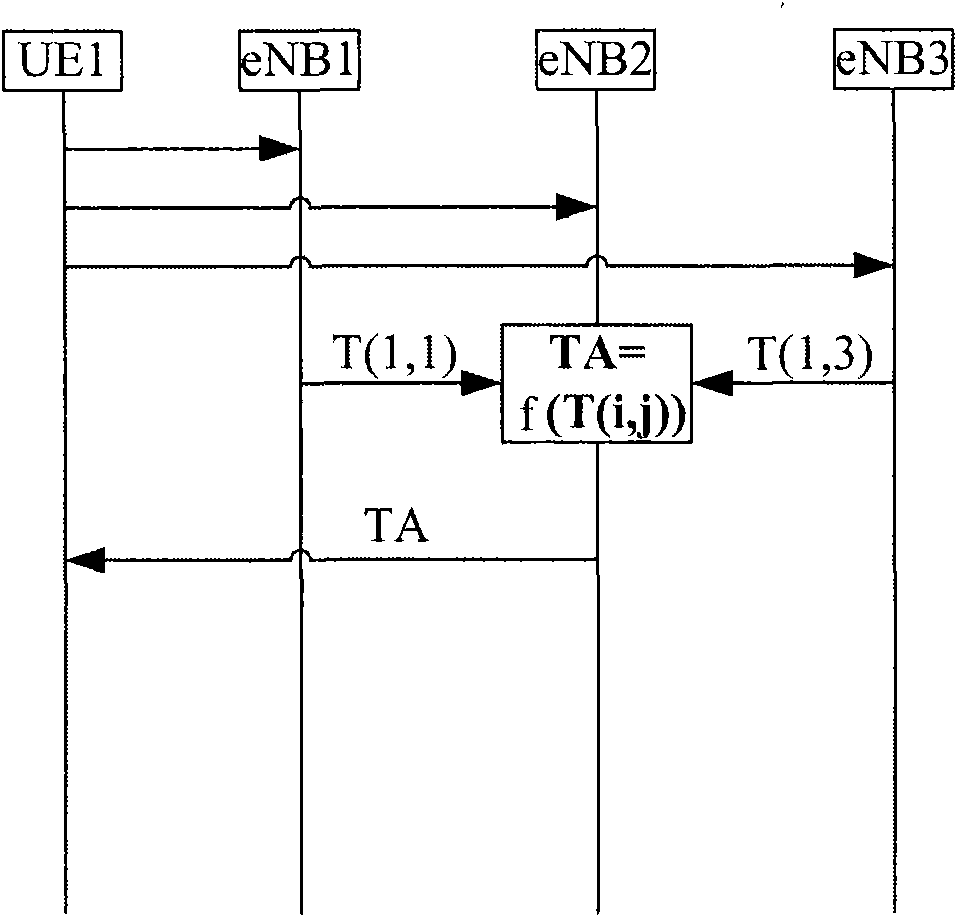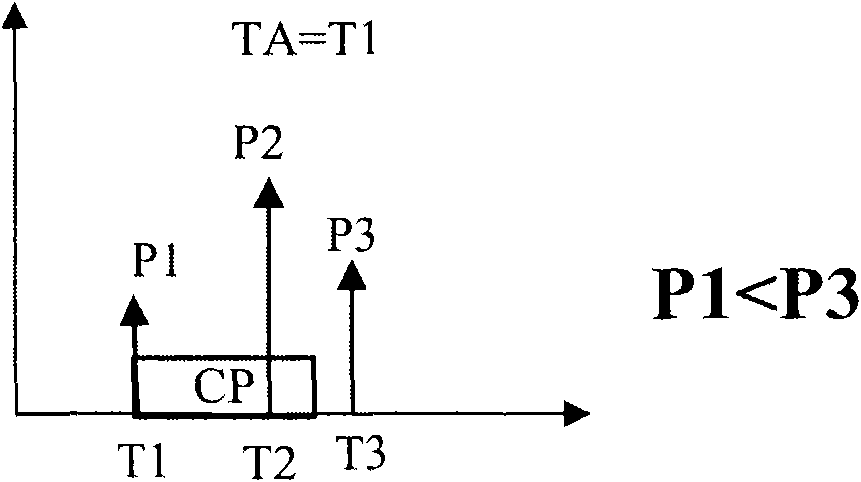Method and device for adjusting timing advance in uplink multipoint reception
A technology of timing advance and advance, which is applied in the field of communication and can solve problems such as interference and signal error demodulation
- Summary
- Abstract
- Description
- Claims
- Application Information
AI Technical Summary
Problems solved by technology
Method used
Image
Examples
no. 1 Embodiment
[0055] Figure 4 is a diagram showing a signaling flow according to the first embodiment of the present invention.
[0056] Such as Figure 4As shown, the method for adjusting the timing advance of the uplink in a communication system composed of a mobile terminal and multiple base stations according to the first embodiment of the present invention is as follows: firstly, each base station eNB1, eNB2 and eNB3 respectively measure the mobile The channel delays T(1, 1), T(1, 2) and T(1, 3) from the terminal UE1 to each base station eNB1, eNB2, eNB3, and the channel response power P(1, 1), P(1 , 2) and P(1, 3); then, the measured channel delays T(1, 1) and T(1, 3) and power P(1, 3) are reported by the non-serving base stations eNB1 and NB3 to the serving base station eNB2 1) and P(1, 3); Next, the serving base station eNB2 determines the uplink timing advance of the mobile terminal according to the received delay and power information and the channel delay and power information...
no. 2 Embodiment
[0069] A possible problem in the first embodiment is the signaling overhead when the non-serving base station reports delay and power information to the serving base station. Firstly, the method according to the embodiment of the present invention needs to transmit extra power information between base stations, which increases the signaling overhead; secondly, since the timing advance is updated periodically, the increased signaling overhead increases the system burden. In order to improve the above problems, the following embodiments are proposed to reduce signaling overhead from information transfer between base stations, and at the same time achieve beneficial effects of the present invention.
[0070] Figure 7 is a diagram showing a signaling flow according to the second embodiment of the present invention.
[0071] Such as Figure 7 As shown, the method for adjusting the uplink timing advance according to the second embodiment of the present invention may be as follows...
no. 3 Embodiment
[0079] Figure 8 is a diagram showing a signaling flow according to the third embodiment of the present invention.
[0080] Such as Figure 8 As shown, the method for adjusting the uplink timing advance according to the third embodiment of the present invention may be as follows: in step ①, the transmitting and receiving unit 604-2 of the serving base station eNB2 satisfies a predetermined condition (which may be as described later In the case of the threshold judgment condition of step ⑤ in the fifth embodiment—threshold exceeds?), all channel delay and power information are notified to the non-serving base stations eNB1 and eNB3. Here, the transmitting and receiving unit 604-2 of the serving base station eNB2 notifies the non-serving base station of the channel delay and power information stored in advance in all relevant base stations, that is, notifies the non-serving base station eNB1 of the channel delay T(1,2 ) and T(1, 3), and the channel response power T(1, 2) and T...
PUM
 Login to View More
Login to View More Abstract
Description
Claims
Application Information
 Login to View More
Login to View More - R&D
- Intellectual Property
- Life Sciences
- Materials
- Tech Scout
- Unparalleled Data Quality
- Higher Quality Content
- 60% Fewer Hallucinations
Browse by: Latest US Patents, China's latest patents, Technical Efficacy Thesaurus, Application Domain, Technology Topic, Popular Technical Reports.
© 2025 PatSnap. All rights reserved.Legal|Privacy policy|Modern Slavery Act Transparency Statement|Sitemap|About US| Contact US: help@patsnap.com



